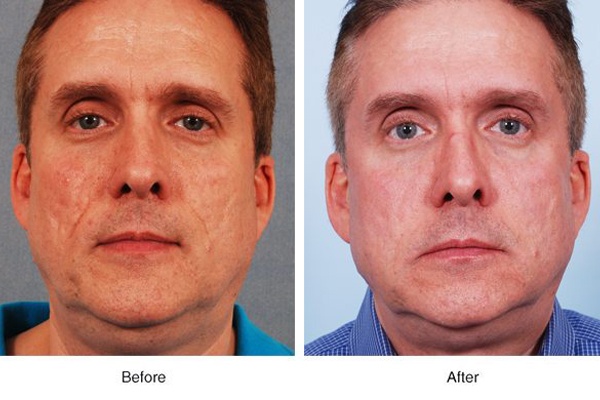Skin Rejuvenation Treatments: The Ultimate Overview to Rejuvenating Your Skin
Skin Rejuvenation Treatments: The Ultimate Overview to Rejuvenating Your Skin
Blog Article
Discovering Skin Disease: Recognizing and Dealing With Acne Scars for Healthier Skin
Acne scars represent a significant problem for people seeking to maintain healthy and balanced skin, as they can affect both appearance and self-confidence. Comprehending the various kinds of scars, from atrophic to hypertrophic, is crucial for establishing proper therapy choices.
Understanding Acne Marks

The body's natural recovery procedure can lead to either atrophic scars, which look like anxieties in the skin, or hypertrophic marks, which are increased and arise from overproduction of collagen. Furthermore, the psychological toll of acne scars must not be undervalued; lots of people report sensations of embarrassment, stress and anxiety, and decreased self-esteem. This emotional worry can impact social communications and total quality of life.
Dealing with acne marks needs an extensive understanding of their development and effect. Recognition of the possibility for lasting consequences associated with neglected scars can inspire individuals to seek suitable treatments. Early intervention and efficient administration methods can substantially boost skin look and improve emotional strength, stressing the relevance of recognizing the intricacies bordering acne marks.
Sorts Of Acne Marks
Acne marks can be categorized into distinct kinds, each exhibiting unique qualities and requiring specific therapy techniques. acne treatment for sensitive skin. The main kinds of acne marks consist of atrophic, hypertrophic, and keloid scars

Hypertrophic scars, in contrast, are elevated above the skin level and are the outcome of excessive collagen production throughout the recovery process. They commonly remain within the limits of the initial acne lesion. Keloid scars are comparable yet extend beyond the initial injury site, developing larger, raised areas that can be uncomfortable or itchy.
Comprehending these types of marks is necessary for selecting suitable treatment alternatives. Different scars may react better to particular therapies, such as laser treatments, fillers, or medical interventions, highlighting the relevance of a tailored method to acne scar administration.
Identifying Your Scars
Acne marks usually fall into 2 groups: atrophic and hypertrophic marks. These can further be categorized right into ice-pick marks, boxcar marks, and rolling marks, each exhibiting unique features and requiring different techniques for analysis.
Hypertrophic marks, on the various other hand, are raised and happen because of too much collagen manufacturing during the healing process. Acknowledging the details features of your scars-- such as deepness, appearance, and width-- look at here is important for appropriate identification (acne scars). Additionally, consider the distribution of marks throughout your skin, as this can show the intensity and period of the acne condition
Engaging with a dermatologist can offer valuable understandings right into the nature of your marks, helping in the differentiation between numerous kinds. A complete understanding of your scars will eventually lead to an extra customized and efficient therapy plan, ensuring a clearer and much healthier skin.
Therapy Options Available
Determining the specific sort of acne scars present on your skin prepares for checking out efficient treatment alternatives. Typical kinds of acne marks include atrophic (depressed), hypertrophic (elevated), and post-inflammatory erythema.
For atrophic scars, alternatives such as chemical peels, microneedling, and laser resurfacing are commonly made use of. Chemical peels make use of acids to eliminate the external layer of skin, promoting brand-new cell growth.
Hypertrophic scars can be treated with corticosteroid shots to flatten the mark or laser therapy to lower inflammation and boost appearance. Silicone gel sheets and stress dressings may likewise aid in taking care of raised scars.
Additionally, dermal fillers can momentarily fill out anxieties from atrophic marks, while surgical excision might be Check Out Your URL appropriate for serious instances. Each treatment choice has its factors to consider and benefits, making it vital to consult with a skin specialist. They can give customized recommendations based upon the kind go to the website and seriousness of your scars, along with your skin kind and overall health and wellness.
Tips for Prevention
Efficient prevention techniques can considerably decrease the possibility of establishing acne scars. Utilizing non-comedogenic items assists stop stopped up pores, which can intensify acne.
Avoiding need to pop or pick acne sores is crucial, as this can bring about much deeper skin damage and raise the threat of scarring. Instead, consider using a cool compress or non-prescription treatments to reduce swelling and inflammation.
Sun defense is one more important aspect of avoidance; ultraviolet (UV) rays can darken scars and prevent the recovery process. Using a broad-spectrum sunscreen with at the very least SPF 30 daily can secure the skin and promote also healing.
Finally, keeping a balanced diet plan rich in vitamins, minerals, and anti-oxidants supports skin wellness and healing. Remaining hydrated and taking care of anxiety levels can additionally play a significant duty in decreasing acne flare-ups. By implementing these methods, individuals can substantially minimize their chances of establishing acne marks.
Final Thought
In conclusion, understanding and determining acne marks is crucial for effective treatment and accomplishing much healthier skin. Different types of acne scars, including atrophic and hypertrophic scars, require certain treatments customized to individual needs.
The body's natural healing procedure can result in either atrophic marks, which show up as depressions in the skin, or hypertrophic marks, which are raised and result from overproduction of collagen. They are further split right into 3 subtypes: ice pick scars, boxcar scars, and rolling scars. Acne scars generally drop into 2 categories: atrophic and hypertrophic marks. These can better be identified right into ice-pick scars, boxcar marks, and rolling scars, each exhibiting distinct qualities and requiring different approaches for analysis.
Various kinds of acne marks, including atrophic and hypertrophic scars, require particular interventions tailored to specific demands.
Report this page